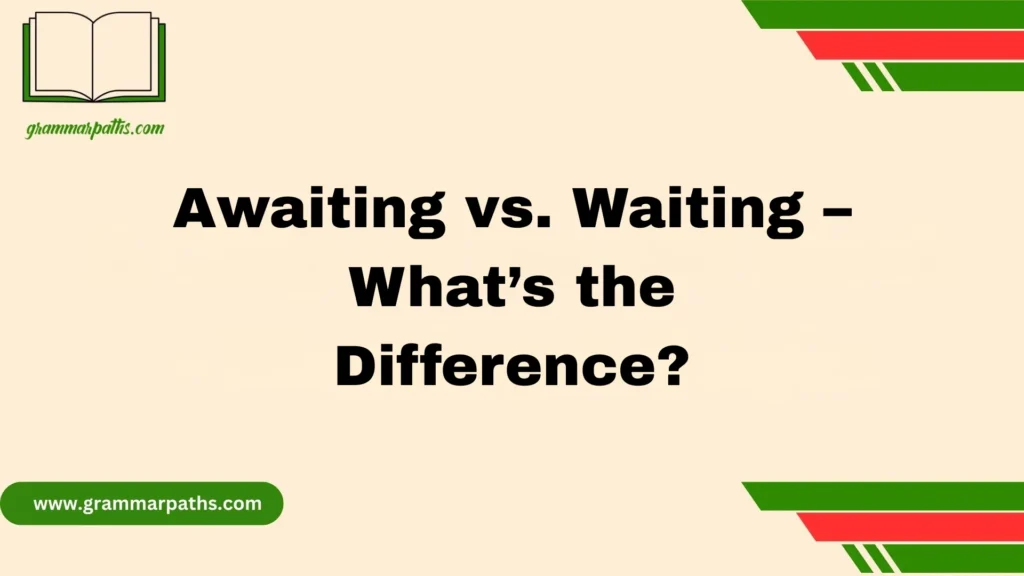Sometimes in life, I feel trapped in a maze of pointless rules and endless forms, a truly Kafkaesque feeling that perfectly fits the phrase born in the mid-20th century. This concept captures the confusion we often face today, living in a modern world full of bureaucratic loops and surreal demands that leave us beaten and helpless. Reading Kafka’s stories, written by Franz to describe situations that are absurdly, complex, illogical, and nightmarishly strange, I realized how reality can feel more real than fiction.
In my work, I’ve seen systems overwhelm reason, cloud justice, and quietly sap humanity. This Kafkaesque reality warns us to stay alert to rigid setups that grow unchecked. When I hear people complain about being stuck in paperwork, I remember how deeply old tales speak to our lives. They show how tangled processes, barriers, and daily struggles shape our world, reminding us that Kafka’s vision is not just fiction, but a mirror of modern life.
Defining Kafkaesque
At its core, Kafkaesque refers to situations that are:
- Absurdly complex or illogical
- Overwhelmingly bureaucratic
- Oppressive or nightmarish
- Powerless-inducing
Linguistic Definition
The dictionary defines Kafkaesque as: “Having a nightmarishly complex, bizarre, or illogical quality, especially involving bureaucracy or oppression.”
Extended Meaning
Beyond the literal, Kafkaesque describes moments when life itself feels surreal. It doesn’t always require physical danger—it can be emotional, mental, or systemic. For example, trying to resolve a simple issue with a government agency only to be bounced between departments repeatedly feels Kafkaesque.
What Kafkaesque Is Not
Many confuse Kafkaesque with mere surrealism. While surreal works may be strange or dreamlike, Kafkaesque emphasizes:
- Powerlessness against systems
- Absurdity intertwined with reality
- A sense of ongoing struggle rather than mere strangeness
Historical and Cultural Context
Franz Kafka’s Life and Influence
Franz Kafka (1883–1924) was a Prague-born writer who explored alienation, bureaucracy, and existential dread. He worked at an insurance company, which exposed him to the kind of bureaucratic absurdity he later depicted in stories.
Kafka’s personal experiences shaped his writing:
- Alienation: Kafka often felt isolated in his personal and professional life.
- Authoritarian structures: Experiences with oppressive institutions informed his themes.
- Psychological depth: His stories often blur reality and perception, reflecting inner struggles.
Origins of the Term
The word “Kafkaesque” appeared in literary criticism in the 1950s, decades after Kafka’s death. Critics used it to describe the surreal, oppressive atmospheres of his novels, particularly The Trial and The Castle.
Literary Context
Kafka’s works intersect with early 20th-century existentialism. Themes of alienation, absurdity, and bureaucracy reflect broader societal changes, including urbanization, industrialization, and the rise of impersonal institutions.
Core Traits of Kafkaesque Scenarios
Kafkaesque situations are instantly recognizable once you know what to look for. The key traits include:
Absurd Bureaucracy
Endless forms, contradictory rules, and pointless procedures are central to Kafkaesque experiences. Imagine submitting documents for a permit, only to be told:
“Your application is invalid until you provide the form you haven’t been told exists.”
Surreal and Nightmarish Elements
Kafkaesque events often feel like distorted reality. Common elements include:
- Inexplicable rules
- Shifting environments
- Strange transformations or occurrences
Sense of Powerlessness
A defining feature is the inability to influence outcomes, no matter how logical your approach.
Isolation and Alienation
Characters in Kafkaesque scenarios often feel cut off from support systems. Even familiar people may appear indifferent or hostile.
Paradox and Illogical Reasoning
Situations defy common sense, yet participants must obey rules or navigate the system.
| Trait | Real-Life Example | Effect on the Individual |
| Absurd Bureaucracy | Endless insurance paperwork | Frustration, exhaustion |
| Surreal Elements | Contradictory workplace rules | Confusion, stress |
| Powerlessness | Denied appeals without explanation | Hopelessness |
| Isolation | Lack of support in a legal case | Alienation, anxiety |
| Paradox | System enforces impossible deadlines | Disorientation, burnout |
Recognizing Kafkaesque in Everyday Life
Even outside literature, Kafkaesque moments abound.
Modern Bureaucracy
Government processes often exemplify Kafkaesque traits:
- DMV or tax agencies requiring multiple forms for the same request
- Conflicting instructions from different departments
- Automated systems providing no human assistance
Workplace Scenarios
Corporate Kafkaesque moments include:
- Projects with contradictory deadlines
- Policies that change without notice
- Meetings that achieve nothing but increase stress
Digital and Online Examples
Technology has created new Kafkaesque experiences:
- Endless automated customer service loops
- AI or chatbots providing inconsistent or illogical responses
- Software with hidden or unexplained error messages
Political and Societal Contexts
Policies or legal systems can feel Kafkaesque when they:
- Apply rules arbitrarily
- Punish minor infractions disproportionately
- Require compliance with unclear or inaccessible regulations
Kafkaesque in Media and Pop Culture
Movies
Films often capture Kafkaesque atmospheres:
- Brazil (1985): Bureaucracy and surveillance dominate daily life
- The Trial (1962 adaptation): Nightmarish legal struggles
- Being John Malkovich (1999): Surreal control over personal freedom
TV and Literature
TV shows like Black Mirror explore Kafkaesque digital absurdities, while modern novels often depict characters trapped in oppressive systems.
Video Games
Interactive storytelling lets players experience Kafkaesque scenarios, such as:
- Confusing quest lines in RPGs
- In-game bureaucracy with contradictory instructions
- Environments that shift unpredictably, creating a sense of unease
Case Studies of Real-Life Kafkaesque Situations
| Sector | Scenario | Kafkaesque Trait | Outcome |
| Government | Applying for a permit | Absurd bureaucracy | Weeks of delay, repeated rejections |
| Healthcare | Insurance claim denial | Powerlessness | Financial strain, frustration |
| Corporate | Employee must follow contradictory guidelines | Paradox | Missed deadlines, stress |
| Legal | Court requires missing documentation without notice | Isolation | Legal disadvantage, anxiety |
Example 1: Bureaucratic Nightmare
A citizen attempts to renew a passport. Department A says the form must be approved by Department B, but Department B requires Department C’s clearance. This cycle continues for weeks, illustrating Kafkaesque absurd bureaucracy.
Example 2: Workplace Kafkaesque
An employee receives conflicting instructions from two managers. Following one directive violates the other, creating impossible choices and stress.
Why Kafkaesque Matters Today
Understanding Kafkaesque scenarios helps:
- Navigate modern bureaucracy effectively
- Recognize systemic absurdities
- Develop mental resilience against seemingly impossible situations
Lessons from Kafka
Kafka’s work reminds us that:
- Complexity and absurdity are inherent in modern life
- Awareness of these traits can reduce frustration
- Humor or creativity can mitigate Kafkaesque experiences
Conclusion
The Kafkaesque experience reminds us how trapped we can feel in a maze of pointless rules and endless forms, leaving us beaten and helpless in a modern world filled with bureaucratic loops and surreal demands. Kafka’s stories, written by Franz, describe situations that are absurdly, complex, illogical, and nightmarishly strange, showing how reality can feel more real than fiction. Understanding this feeling helps us stay alert to rigid setups that grow unchecked, cloud justice, and quietly sap humanity.
When people complain about being stuck in paperwork or tangled processes, it perfectly fits the phrase born in the mid-20th century. These old tales speak to our daily lives, show how barriers and struggles shape our world, and warn us to approach systems and setups with reason, care, and awareness. Recognizing the Kafkaesque reality can make us more mindful of absurdities in modern life while helping us navigate complex, illogical, and nightmarishly strange situations more wisely.
FAQs
Q1: What does Kafkaesque mean?
Kafkaesque describes situations that are absurdly, complex, illogical, or nightmarishly strange, often leaving a person feeling trapped, beaten, or helpless in a bureaucratic or modern world.
Q2: Where did the term Kafkaesque come from?
The term comes from Franz Kafka’s stories, born in the mid-20th century, which describe situations that perfectly capture confusion, barriers, and endless processes in daily life.
Q3: How can I recognize Kafkaesque situations?
Look for tangled rules, endless forms, bureaucratic loops, or surreal demands that sap humanity and cloud justice, leaving people stuck or helpless.
Q4: Is Kafkaesque only negative?
While often negative, it also warns us to stay alert to rigid setups and complex systems, helping us approach challenges with reason and awareness.

Mia Rose is the passionate writer and founder of GrammarPaths.com, a resource dedicated to helping learners master English grammar, idioms, and writing skills with ease. With a deep love for language and years of experience in teaching and content creation, Mia simplifies complex grammar rules into clear, practical guides that readers can instantly apply.










